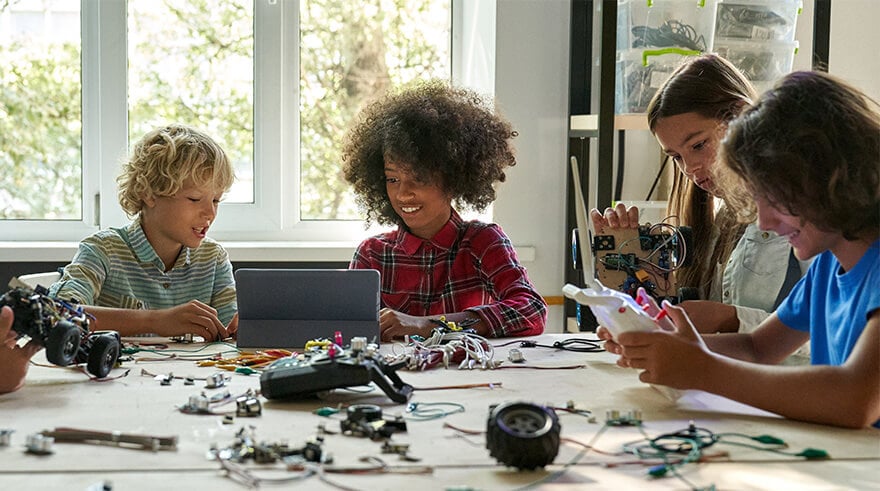Einstein once said that “play is the highest form of research”. He knew that play and games are not just a simple waste of time. Games actually promote situated learning, or in other words, learning that occurs when someone is placed into a very immersive situation to learn.
All throughout our lives, we’ve played games that helped explore higher-order thinking skills like creativity, problem-solving, and critical thinking. It doesn’t matter if the game is digital or not — playing games is a lifelong way of empowering both children and adults to learn.
The addition of game-like elements and principles in non-gaming contexts is called gamification. For example, you can use items in the game, such as points or currency, and complete a series of tasks to advance to the next level to make learning more fun and engaging. It’s also a set of tactics and techniques to solve problems, based on the characteristics of games.

Introducing gamification in Education
Games are powerful vehicles for human learning. The elements that make up games teach players the skills they need to succeed in the 21st century and beyond. Games promote communication, cooperation, and competition amongst players.
Simply put, the goal of gamifying education is to keep learners entertained. This is a great strategy, because not only do they learn better when having fun — they also learn the best when they have clear goals and targets to reach for.
In this new era, marking one's learning progress through gamification has proven to be effective. Some benefits of this approach include increased student engagement, higher concentration levels amongst students, and the feeling of ownership over their learning.

5 simple ways to gamify your classroom
A truly gamified classroom does more than just motivate with a points system or levels. There’s also sustained engagement and adjustment to the needs of its students. Teachers can design their own gamified learning environments by implementing the following activities:
1. Give points for meeting academic goals
Correct or well-structured answers are graded on a points system, with students moving up through the ranks as they complete more questions and get more points (or badges).
2. Give points for meeting procedural goals
Badges, stickers, or points can also be used for tasks that don't have anything to do with academics, such as cleaning up the classroom, putting the coat on, or lining up in order.
3. Set levels, checkpoints, or other progression methods
Indicators that indicate progress in relation to the whole like checkpoints, levels, and other accomplishments help learners to focus and feel proud when they reach them.
4. Establish a competitive environment
Competition with classmates, other classes, or even the teacher can make a game-based learning system really rewarding for all parties involved.
5. Introduce roles as new perspectives
The element of fantasy role-play is a big draw for students; they can use their imaginations and learn from the experience of being other people (judge, designer, doctor, etc.), and see what they could accomplish in a specific role.
Gamification just works. It triggers powerful human emotions such as happiness, intrigue, and excitement. Institutions around the globe are using gamification to engage students and get astounding results.


.png)